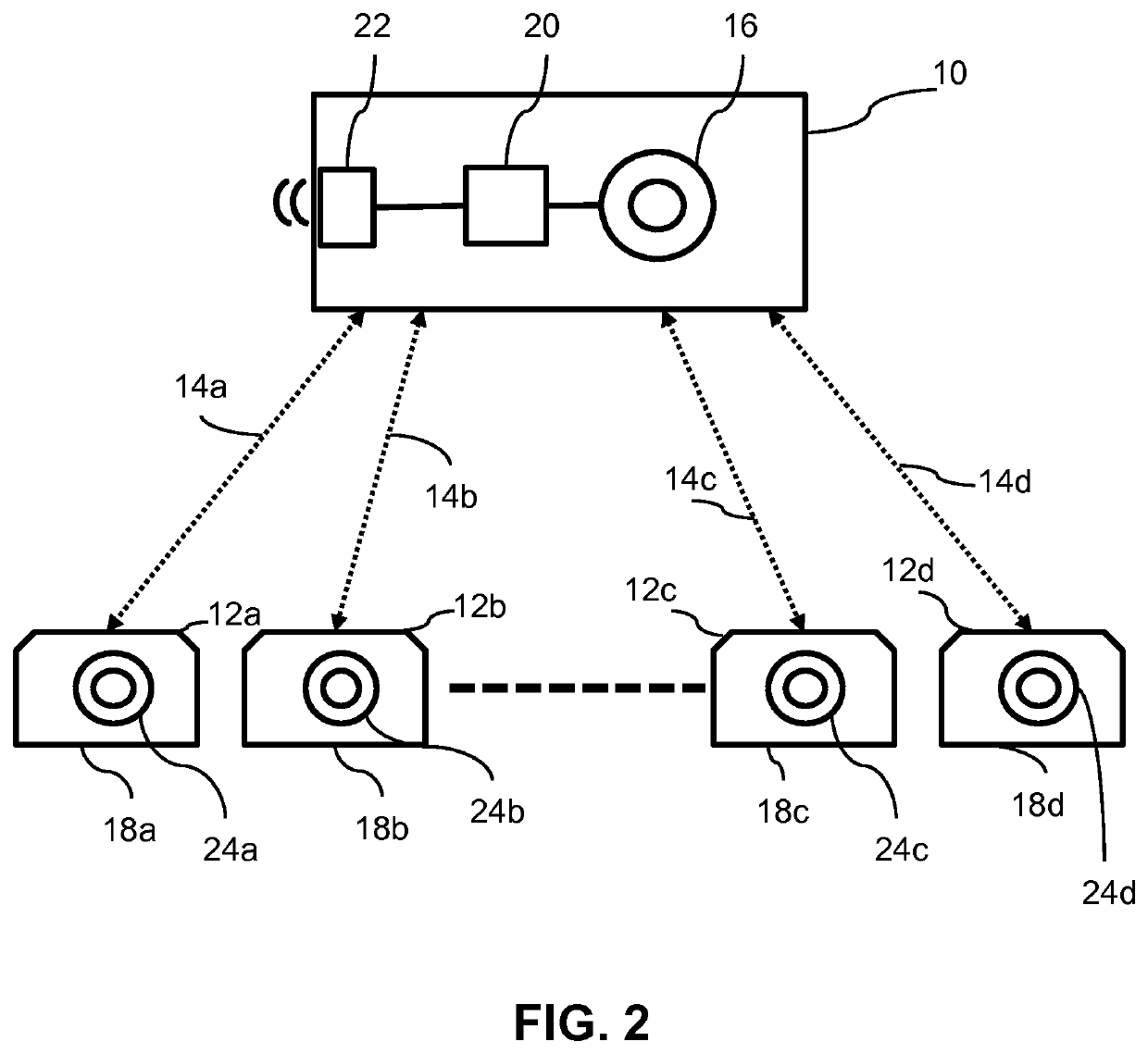Ultrasound imaging apparatus and method
- Summary
- Abstract
- Description
- Claims
- Application Information
AI Technical Summary
Benefits of technology
Problems solved by technology
Method used
Image
Examples
first embodiment
[0067]In the first embodiment described with reference to FIG. 2, a master control unit 10 communicates with slave probes 12a, 12b, 12c and 12d, and optionally additional similar probes (not shown), over paths represented by lines 14a, 14b, 14c and 14d. A global clock 16 in the control unit 10 is provided, and this may be set by an external global clock (not shown), for example by a server over the Internet, or by a relay message from another control unit. Internal local clocks 18a, 18b, 18c and 18d in the respective connected probes are synchronized from the global clock over the same paths of communication 14a-14d.
[0068]The control unit comprises a data processor 20 running an application which controls the whole system of master and slaves, and which communicates through a communications unit 22 with the probes and with external networks such as other control units, hospital systems and the Internet. The control unit 10 sends beamforming control commands to the probes. It also c...
third embodiment
[0073]A third embodiment will now be described with reference to FIG. 4. This system is similar to that of FIG. 3, except that inter-probe communications are used for sequencing the probes. A register 52 in the master control unit 50 stores the triggering sequence of the connected probes 32a-32d. Each probe stores its own scan state, and also the identity of the probe that is the next in the firing sequence. Thus each probe can communicate with at least one other probe, and in most cases two other probes, and their communication paths are shown as 54, 56, 58, 60 and 62 in the drawing. As with the other embodiments, any number of probes may be used in the sequence. Beamforming begins with the first probe in the probe sequence set by the control unit 50 as master. The control unit 1 sends a command to the first probe 40a to initiate its scan, and also a signal indicative of the next probe, probe 32b, in the sequence. Instead of the identity of the probe, the signal could contain the I...
PUM
 Login to view more
Login to view more Abstract
Description
Claims
Application Information
 Login to view more
Login to view more - R&D Engineer
- R&D Manager
- IP Professional
- Industry Leading Data Capabilities
- Powerful AI technology
- Patent DNA Extraction
Browse by: Latest US Patents, China's latest patents, Technical Efficacy Thesaurus, Application Domain, Technology Topic.
© 2024 PatSnap. All rights reserved.Legal|Privacy policy|Modern Slavery Act Transparency Statement|Sitemap



